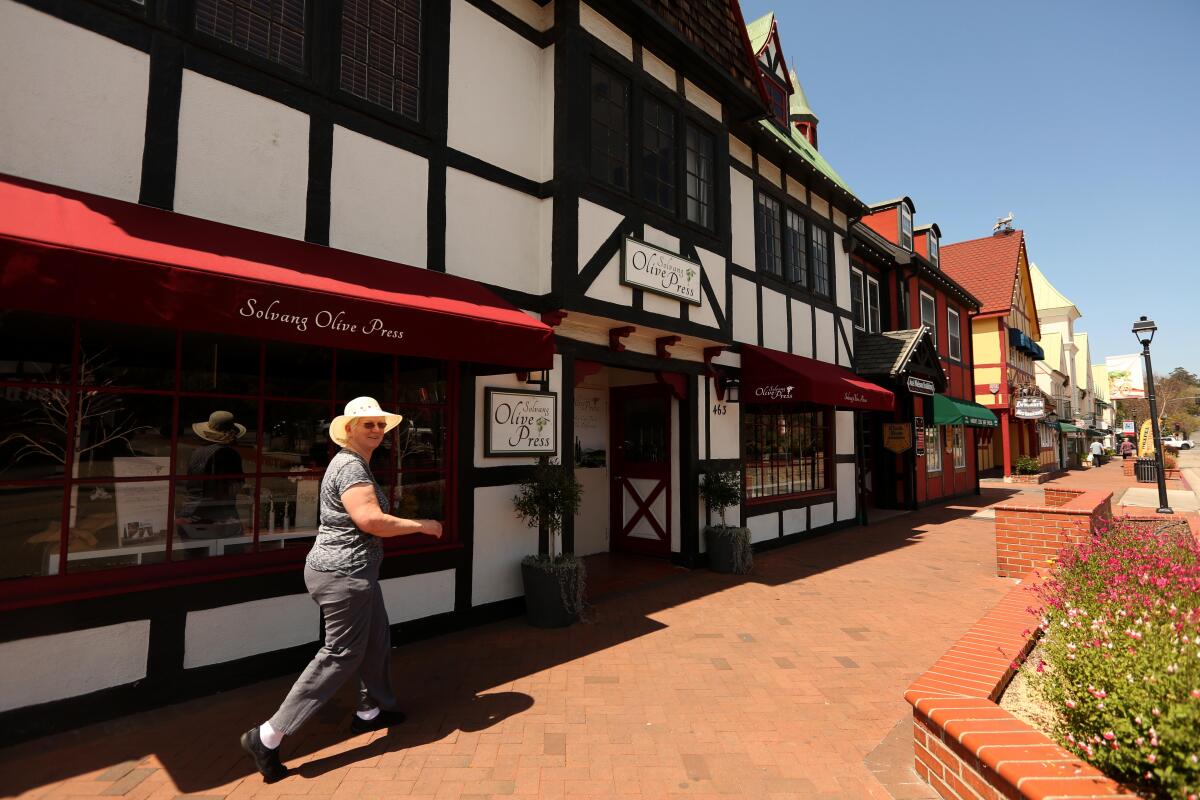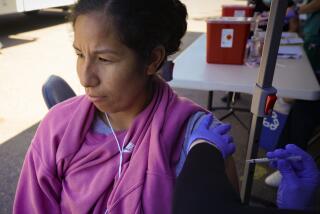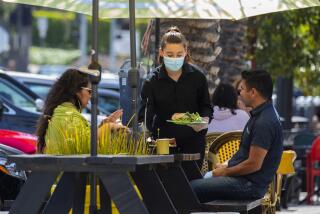Central Coast counties seek to break from state’s regional stay-at-home order

- Share via
Three Central Coast counties said Monday they may seek approval to separate from the Southern California region that is subject to the state’s stay-at-home order to curb the spread of the coronavirus.
Ventura, Santa Barbara and San Luis Obispo counties will request that the state consider them a separate region for determining restrictions if the capacity in their intensive care units exceeds 15% in the next three weeks, according to a Ventura County news release.
“A smaller regional approach is important for our community members and struggling businesses,” said Ventura County Executive Officer Mike Powers in a statement. “We believe it’s reasonable to have the Central Coast as one region instead of including our county with over half the state’s population in the current Southern California region.”
The stay-at-home order, announced last week by Gov. Gavin Newsom and tied to regional hospitalization capacity, has faced criticism from officials who have said it will destroy small businesses. They have urged the governor to consider implementing smaller and more targeted regions.
The state’s strategy currently divides California into five regions: Southern California, the San Joaquin Valley, the Bay Area, the Greater Sacramento area and Northern California.
A region is required to implement the state’s stay-at-home order — which restricts most retail capacity to 20% and shuts down restaurant dining, hair salons, nail salons, public playgrounds, card rooms, museums, zoos, aquariums and wineries — if its available ICU capacity drops below 15%.
A stay-at-home order went into effect Sunday in Southern California and the San Joaquin Valley and will remain in place for at least three weeks. The order will be felt more strongly in counties like Orange, Ventura and Riverside, which have had far less stringent restrictions than Los Angeles County.
In addition to Los Angeles, Orange, Ventura and Riverside, the Southern California counties affected by the order are Imperial, Inyo, Mono, San Bernardino, San Diego, San Luis Obispo, Santa Barbara and Ventura. The San Joaquin Valley region covers Calaveras, Fresno, Kern, Kings, Madera, Mariposa, Merced, San Benito, San Joaquin, Stanislaus, Tulare and Tuolumne counties.
Dr. Robert Kim-Farley, a medical epidemiologist and infectious diseases expert at the UCLA Fielding School of Public Health, said he thought the state’s regional approach was reasonable, given that if Ventura County’s ICUs were overloaded, L.A. County’s hospitals could be called upon to help, for example.
Notify, California’s new COVID-19 contact tracing app, could help contain the pandemic — if authorities can persuade enough people to use it.
The approach, he said, also helps to provide a uniform public health message across a region. As an example, if Ventura did not have restrictions on outdoor restaurant dining, but L.A. did, L.A. residents might be prompted to drive beyond county borders, bringing the virus with them into the Central Coast, which has few hospitals.
“That would just spill high volume of virus over to the surrounding counties,” Kim-Farley said. “It does make sense to stick with this regional approach and not have an ‘every man for themselves’ approach.”
But the news release on the counties’ initiative to separate from the Southern California region stated that being kept in that category could bring economic hardship to the Central Coast and that a change would not affect the counties’ commitment to help other areas.
Orange County officials have also criticized the governor’s stay-at-home order, with Supervisor Lisa Bartlett saying she supports a regionalized approach but the state’s categories are too broad. Bartlett said she and Supervisor Don Wagner plan to introduce a resolution Tuesday affirming the county’s commitment to advocate for local control.
More to Read
Sign up for Essential California
The most important California stories and recommendations in your inbox every morning.
You may occasionally receive promotional content from the Los Angeles Times.













